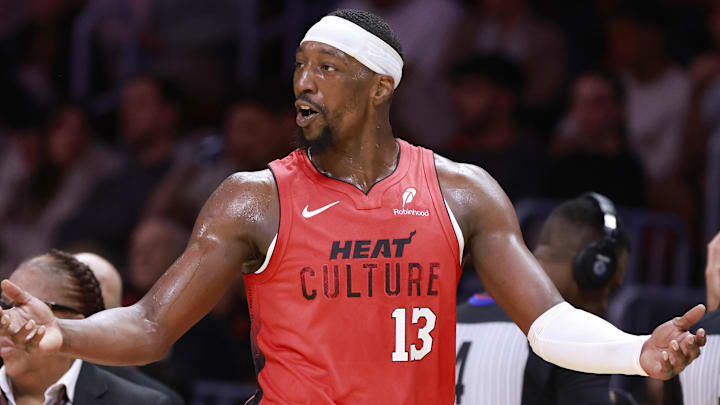Pretty much everyone wants to talk about how the Miami Heat failed to acquire a star over the offseason, or about who the next big name they acquire should be. While these are legitimate discussion points, neither hits on this team’s biggest immediate issue: a lack of continuity, and by extension, chemistry.
This isn’t an all-consuming dilemma on the surface. Training camp provides a window in which to forge familiarity, and synthesize synergy. The thing is, Miami won’t get that opportunity.
Tyler Herro’s injury throws everything off
Tyler Herro will not be ready to return from left ankle surgery until sometime in November. He is a huge piece the Heat must reintegrate into the offense.
That’s not a problem if he’s already logged a ton of reps alongside the vast majority of his teammates. He hasn’t. Bam Adebayo is the most familiar face. After him, it gets dicey.
Three of the members from Miami’s most-used lineup last year—Jimmy Butler, Haywood High, and Duncan Robinson—are on other teams. The second-most used unit features all returning names: Bam, Herro, Kel’el Ware, Davion Mitchell, and Andrew Wiggins. But that group logged just 120 total minutes, across 12 appearances.
We also needn’t pretend all of the returning faces are genuinely familiar faces. Mitchell and Wiggins came over midseason. Neither of them even tallied 500 total minutes alongside both Adebayo and Herro.
This says nothing of Norman Powell’s arrival. Even though he is extremely plug-and-play, integrating someone who could be your second-leading scorer often takes time. The Heat will now be implementing him and Herro together without the benefit of prior practice reps.
It isn't just the dearth of chemistry between core players Miami must navigate, either. At least one of Pelle Larsson and rookie Kasparas Jakucionis will have a meaningful role. That’s yet another variable capable of warping the immediate trajectory.
Midseason roster changes will impact the Heat
Establishing continuity gets a lot harder if the Heat shuffle up the roster in advance of February’s trade deadline.
Related: They are definitely going to make midseason moves.
Whether it’s chasing a superstar or flipping players for assets that can help land a star next summer, Miami is not built to remain entirely idle. The front office is going to do something. And it could be something significant.
Change may be a catalyst for progress, but it doesn’t always happen overnight. Anything the Heat do will ultimately mandate another grace period. New faces take time to implement. Player exits can be tough to overcome.
It might not matter in the grand scheme of things. Miami has goals that extend beyond 2025-26. But it’s also clearly trying to remain relevant in the interim. The biggest obstacle standing in the way of that isn’t the quality of its players. It’s the time they haven’t had—and still aren’t getting—together.
